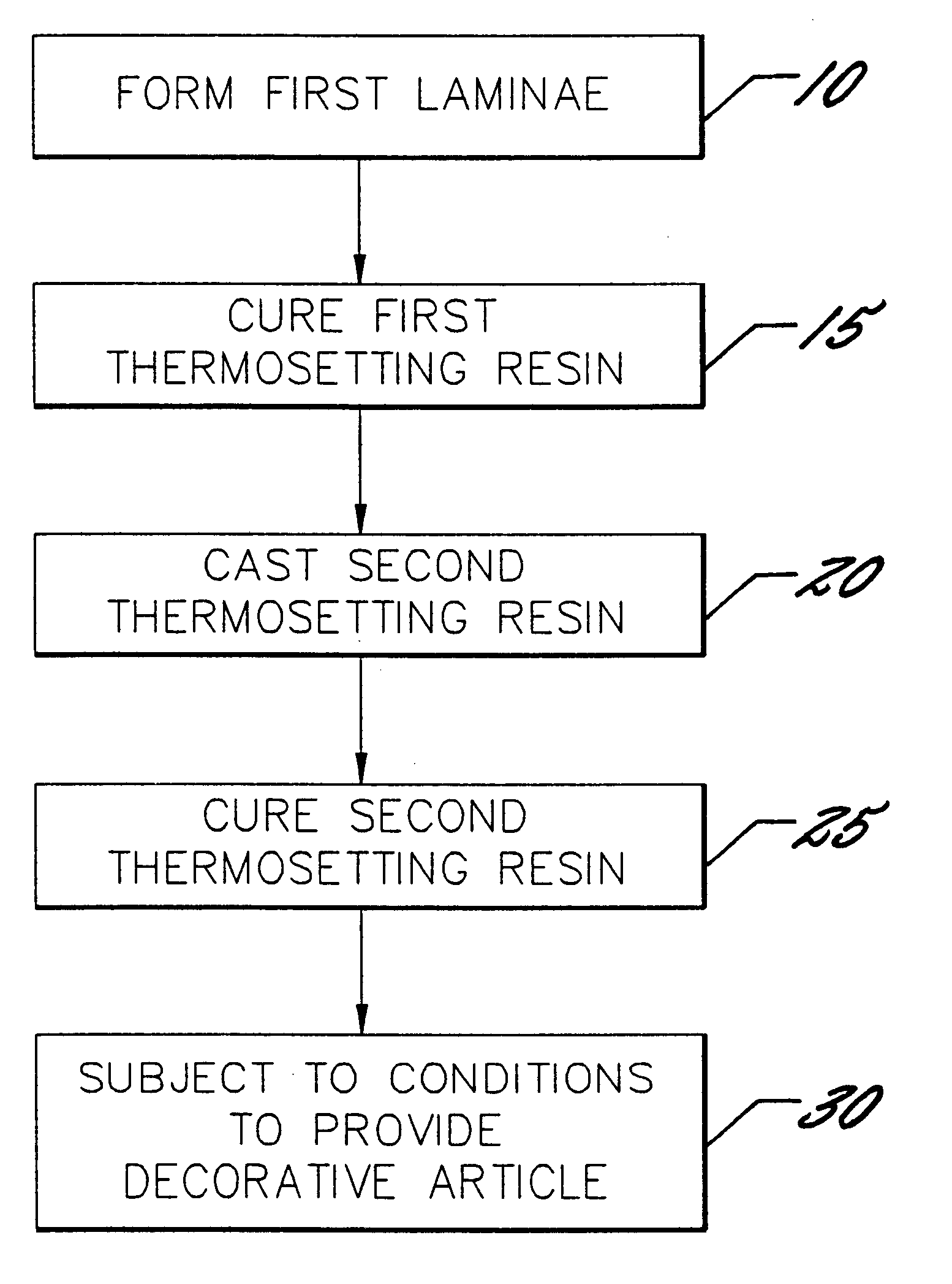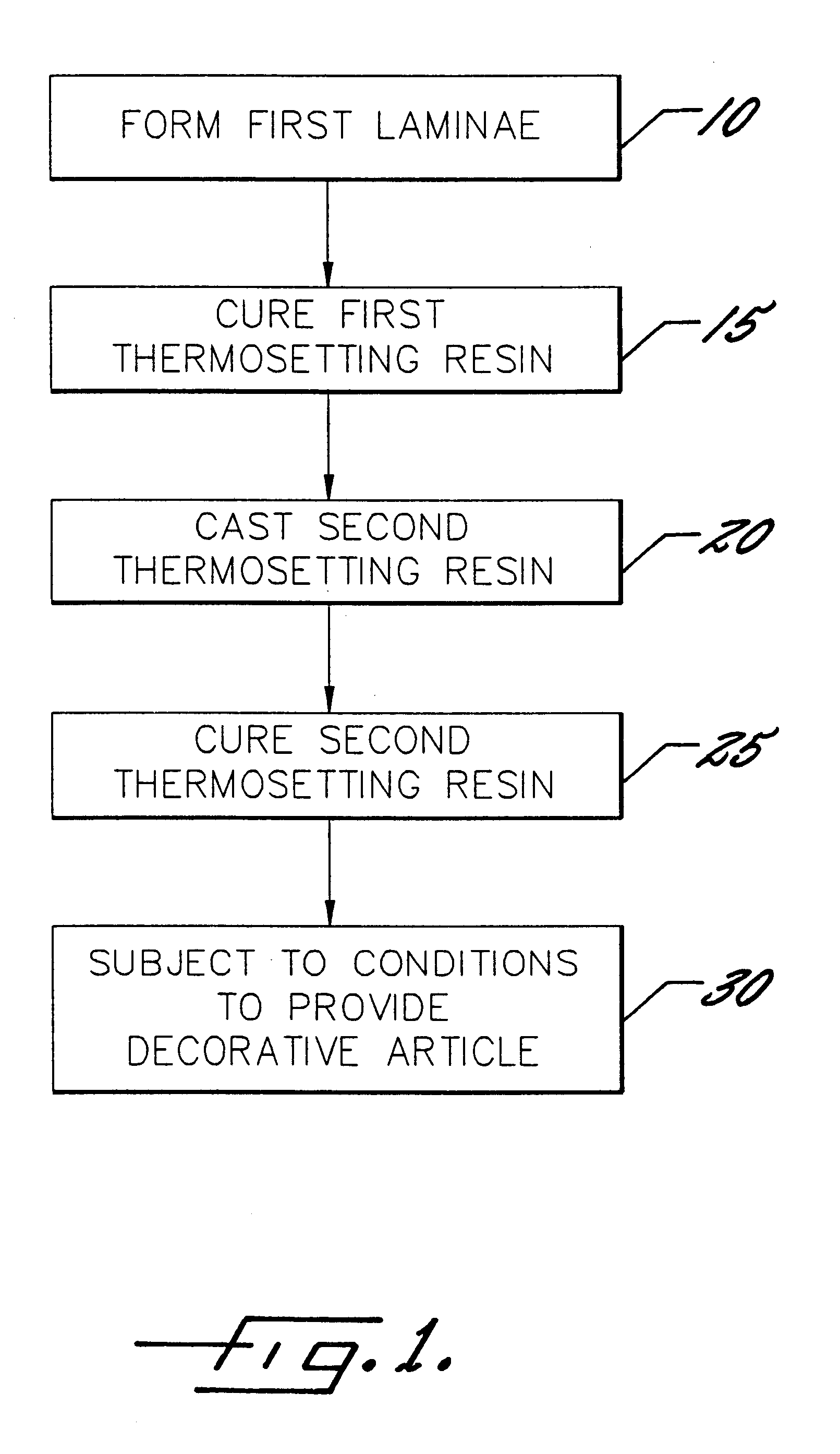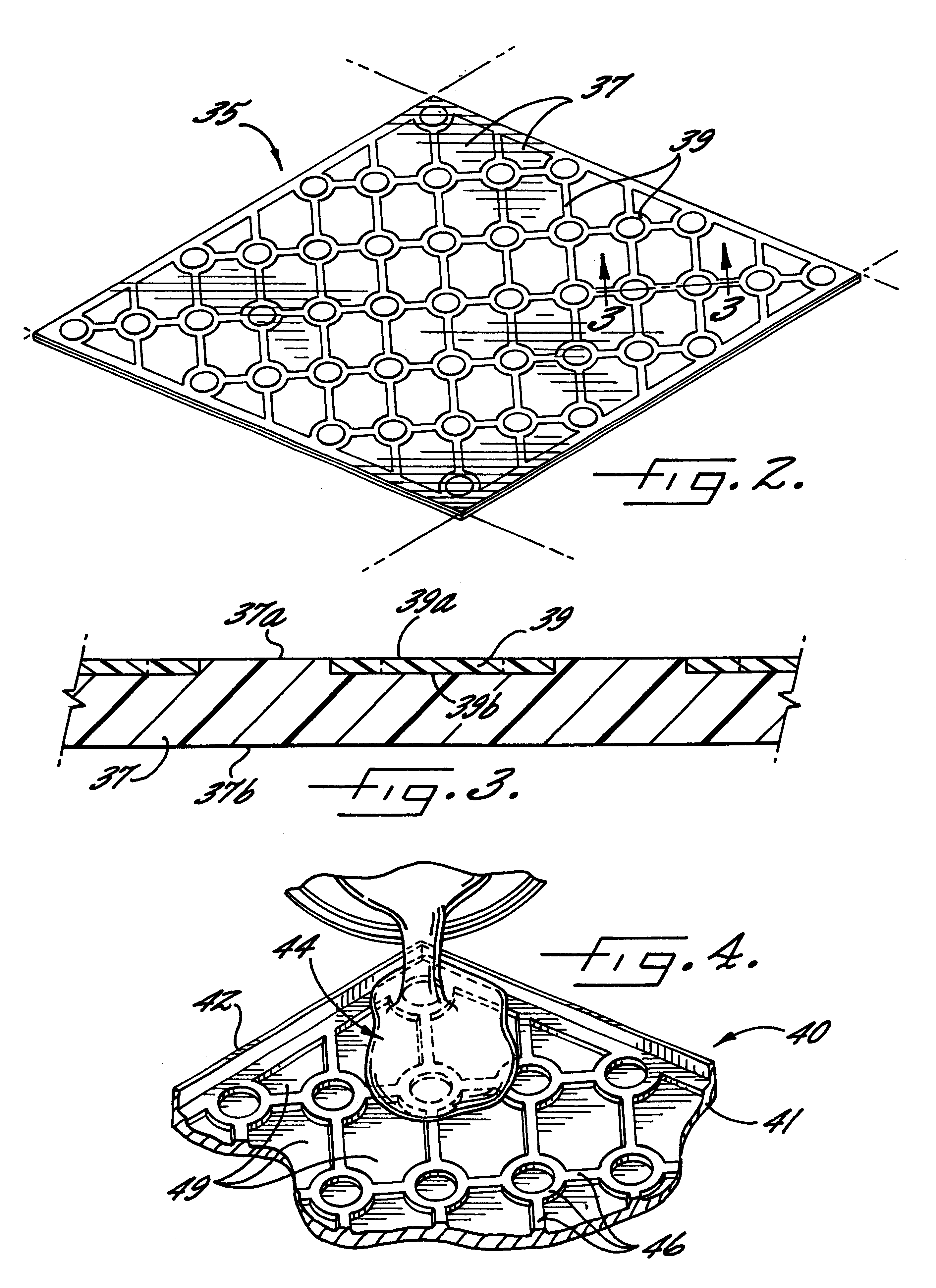Process for making a multi-layered solid surface article
- Summary
- Abstract
- Description
- Claims
- Application Information
AI Technical Summary
Problems solved by technology
Method used
Image
Examples
example 2
A first lamina was produced as in Example 1 above using the same thermosetting resin system. A second lamina was prepared by partially filling the recessed portions in the first lamina to create a decorative article having first and second laminae simulating ceramic tiles surrounded by grout. This was done by spraying Seagrave F.921301 omniplet steel grey granite simulation materials (Seagrave Industrial Coatings, Carlstadt, N.J.) through a Binks #7 spray gun, and partially filling the voids. The sanded surface then leaves a tile and recessed grout appearance.
example 3
A first lamina was produced as in Example 1 above except that the resin system mixture comprised the following (percents are given by weight based on total weight of resin): 66% Aluminum trihydrate (available from R J Marshall Company, 26776 W. Twelve Mile Road, Southfield, Mich. 48034 as Filler # DF40); 34% cobalt promoted ISONPG resin (available from Reichhold Chemical Company, Research Triangle Park, N.C., as PolyLite # 31210); 2% TiO.sub.2 pigment (available from HK Research, 908 Lenoir Road, Hickory, N.C. 28603); 2% MEKP catalyst (available from ATOCHEM, Military Road, Buffalo, N.Y. 14240 as LUPERSOL DDM-9).
The first lamina was allowed to cure to a firm gel stage for 20 minutes and then subjected to a pressure of 50 psi for 1 hour. The second lamina was created following the steps of Example 1 or Example 2 above.
example 4
A casting part was prepared based on an interlocking pattern of irregular pebble-like form. The casting part was cut from a solid high density polyethylene sheet to a depth of 0.070". The casting part was machined with a CNC Router from a scanned piece of art work. The following polyester compound was prepared (percents are given by weight based on total weight of resin): 50% ISONPG Resin (available from HK Research, 908 Lenoir Road, Hickory, N.C. 28603 as # HKR0050); 50% ATH Filler (available from R J Marshall Company, 26776 W. Twelve Mile Road, Southfield, Mich. 48034 as Filler # DF40); 0.6% off white pigment (available from HK Research, 908 Lenoir Road, Hickory, N.C. 28603); 1% MEKP catalyst (available from Atochem, Military Road, Buffalo, N.Y. 14240, as LUPERSOL DDM-9).
This mixture was poured into casting part and allowed to cure for one hour. A second compound with the same chemistry, but with a brown pigment was brushed over the recessed portions in the first lamina created by...
PUM
| Property | Measurement | Unit |
|---|---|---|
| Pressure | aaaaa | aaaaa |
| Angle | aaaaa | aaaaa |
| Angle | aaaaa | aaaaa |
Abstract
Description
Claims
Application Information
 Login to view more
Login to view more - R&D Engineer
- R&D Manager
- IP Professional
- Industry Leading Data Capabilities
- Powerful AI technology
- Patent DNA Extraction
Browse by: Latest US Patents, China's latest patents, Technical Efficacy Thesaurus, Application Domain, Technology Topic.
© 2024 PatSnap. All rights reserved.Legal|Privacy policy|Modern Slavery Act Transparency Statement|Sitemap



